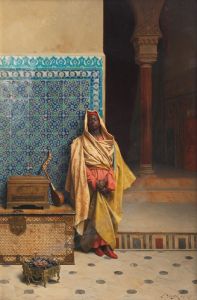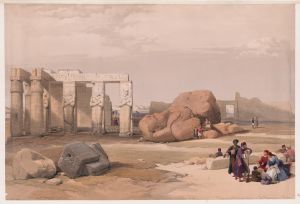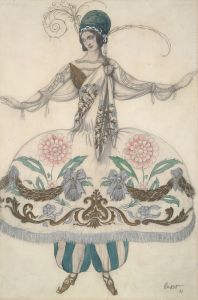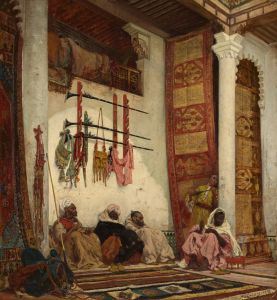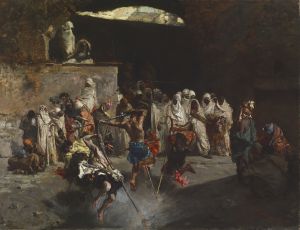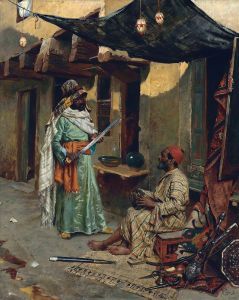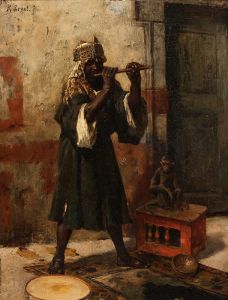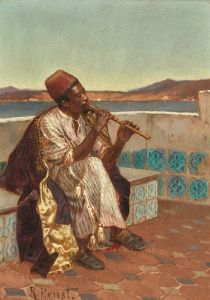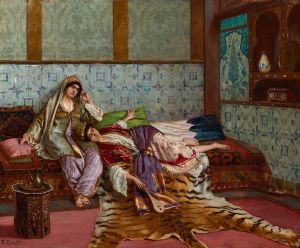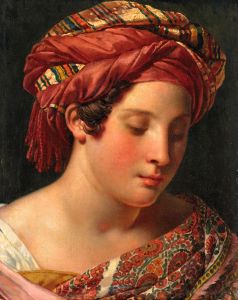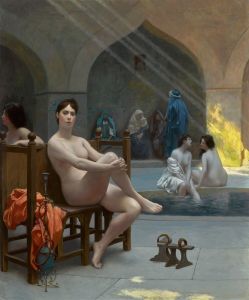
The Palace Guards
A hand-painted replica of Rudolf Ernst’s masterpiece The Palace Guards, meticulously crafted by professional artists to capture the true essence of the original. Each piece is created with museum-quality canvas and rare mineral pigments, carefully painted by experienced artists with delicate brushstrokes and rich, layered colors to perfectly recreate the texture of the original artwork. Unlike machine-printed reproductions, this hand-painted version brings the painting to life, infused with the artist’s emotions and skill in every stroke. Whether for personal collection or home decoration, it instantly elevates the artistic atmosphere of any space.
Rudolf Ernst was an Austrian painter known for his Orientalist works, which often depicted scenes inspired by the cultures and architecture of the Middle East and North Africa. "The Palace Guards" is one of his notable paintings, showcasing his fascination with the exotic and his meticulous attention to detail.
Ernst was born in Vienna in 1854 and studied at the Academy of Fine Arts in Vienna. He later moved to Paris, where he became part of the Orientalist movement, a genre that romanticized and depicted the East as mysterious and exotic. This movement was popular in the 19th century, coinciding with European colonial interests in the region.
"The Palace Guards" exemplifies Ernst's skill in capturing the intricate details and vibrant colors associated with Orientalist art. The painting typically portrays a scene with guards stationed at a palace, dressed in elaborate and richly colored uniforms. Ernst's attention to detail is evident in the depiction of the guards' attire, which often includes elements such as turbans, sashes, and ornate weaponry. The setting might include architectural features like arches, columns, and decorative tiles, reflecting the Islamic and Moorish influences that fascinated many Orientalist artists.
Ernst's work is characterized by its precise brushwork and the use of vivid colors, which bring the scene to life. His paintings often convey a sense of stillness and grandeur, capturing a moment frozen in time. The guards, while stationary, are depicted with a sense of dignity and authority, emphasizing their role in the protection of the palace.
The Orientalist movement, and artists like Ernst, have been subjects of both admiration and criticism. While their works are celebrated for their beauty and technical skill, they are also critiqued for perpetuating stereotypes and presenting a romanticized view of Eastern cultures. These paintings often reflect the Western perspective of the East during the colonial era, which can be seen as an oversimplification or misrepresentation of the diverse cultures and societies they depict.
Ernst's "The Palace Guards" is a reflection of his fascination with the exotic and his desire to capture the allure of the East. His work remains a part of the broader Orientalist tradition, which continues to be studied and analyzed for its artistic merit and cultural implications.
Today, Rudolf Ernst's paintings, including "The Palace Guards," are appreciated for their artistic qualities and are held in private collections and museums. They offer a glimpse into the 19th-century European perspective of the East and continue to be a subject of interest for art historians and enthusiasts alike.





